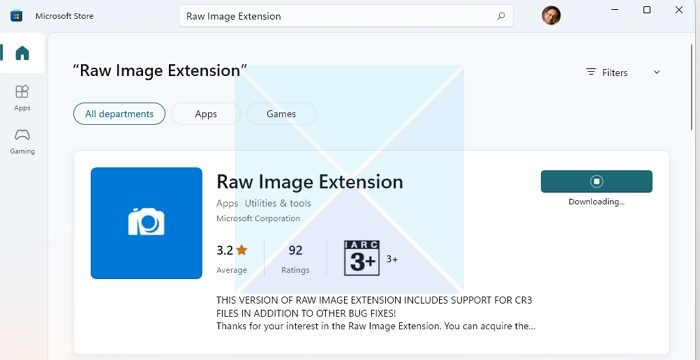The RAW image file format contains minimally processed data from the camera hardware, bringing in high-quality and more detailed images. This is the reason RAW image files are usually very high in size. If you work in photography, you might need to view and work with images of RAW file extensions. Microsoft has released their Raw Image Extension for Windows, adding support for RAW file extension on your computer.

How to view RAW files on Windows 11/10
The Raw Image Extension software package enables native viewing support for raw file formats from mid to high-end digital cameras. This extension lets users view thumbnails and metadata of supported raw files directly within Windows File Explorer or the Photos app.
The current version of the extension supports a wide range of cameras, providing enhanced accessibility to photographers. However, some Raw formats, such as GPR, are not supported.
The extension owes its functionality to the libra open-source project, which is crucial in enabling seamless raw image viewing and management.
To start adding images with RAW extension support, you need to download and install the extension from the Microsoft Store. Once that installation is done, reboot your computer.
Earlier, users were expected to install the third-party software or Microsoft Camera Codec Pack to view and work with RAW files – but now this extension makes things easy.
What is a RAW file in Windows?
RAW image files consist of unprocessed and uncompressed data related to images, allowing photographers to capture virtually every detail they observe through their camera’s viewfinder.
Why are RAW files used?
RAW files include unprocessed and uncompressed image data, enabling photographers to capture nearly all the details they perceive through their camera’s viewfinder. With the RAW file format, photographers can preserve the most significant level of detail among all raster file types, allowing them to edit, compress, and convert the images into various other formats.
Leave a Reply